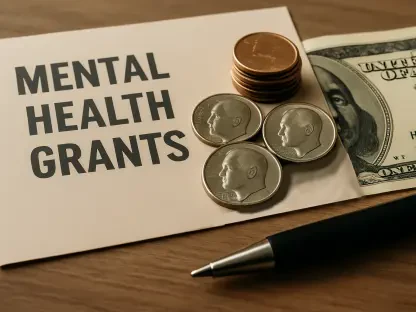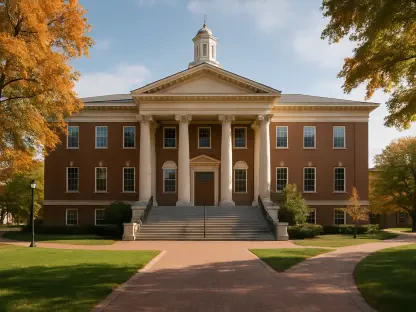Imagine a policy that could reshape college admissions by addressing centuries-old injustices, only to be halted by a single signature, sparking intense debate across various sectors. On October 14, 2025, California Governor Gavin Newsom vetoed Assembly Bill 7 (AB 7), a proposal to allow admissions preferences for descendants of enslaved individuals in the United States. This decision has ignited a firestorm of debate across educational, legal, and political spheres, raising questions about equity, legality, and the role of state versus federal authority in higher education. This roundup gathers insights from various stakeholders—advocates for restorative justice, legal analysts, policy experts, and institutional leaders—to explore the multifaceted reactions to the veto and what it means for the pursuit of fairness in college admissions.
Diving into the Debate: Why AB 7 Sparked Controversy
The core of AB 7 was a vision of restorative justice, aiming to counter the lingering effects of slavery and systemic racism by prioritizing descendants of enslaved individuals in college admissions. Supporters, including student organizations and state legislators, argued that such a measure was a necessary step toward dismantling intergenerational barriers that continue to limit access to higher education for African American communities. Their perspective emphasizes the moral imperative to address historical wrongs through targeted policies, viewing the bill as a bold statement against ongoing inequities.
Opposition to the bill, however, came from multiple angles, including concerns about its necessity and feasibility. Some institutional leaders in California’s higher education system pointed out that colleges already possess the autonomy to implement admissions preferences if they choose, aligning with Governor Newsom’s rationale for the veto. This viewpoint suggests that state mandates might overstep into areas where flexibility at the institutional level could be more effective, avoiding potential bureaucratic entanglements.
A third layer of contention emerged from the political arena, where state resistance to federal pressures played a significant role. Policy analysts noted that Newsom’s decision unfolded against a backdrop of tension with national directives pushing for race-neutral admissions. This clash between state innovation and federal oversight added fuel to the debate, with some viewing the veto as a pragmatic move to avoid further conflict, while others saw it as a missed opportunity to take a stand for equity.
Legal and Practical Hurdles: Insights from Analysts
Navigating State and Federal Laws
Legal experts have weighed in on the complex web of regulations surrounding AB 7, highlighting its potential conflict with existing frameworks. California’s Proposition 209, which bans affirmative action in public institutions, was frequently cited as a barrier, alongside the 2023 U.S. Supreme Court ruling against race-conscious admissions. These analysts argue that passing the bill could have invited immediate lawsuits, placing colleges in a precarious position of non-compliance with higher legal precedents.
Further scrutiny revealed practical challenges in implementation, as noted by legislative reviews. Determining an applicant’s lineage to enslaved ancestors poses significant logistical issues, from verifying documentation to ensuring fairness in the process. Legal scholars suggest that without clear guidelines, such a policy might create more disparities than it resolves, potentially alienating other marginalized groups who do not qualify for the preference.
This perspective underscores a broader concern among analysts: the need for policies that balance historical accountability with current legal realities. Many advocate for alternative approaches, such as socioeconomic-based admissions criteria, which could indirectly address systemic inequities without directly engaging with race or ancestry, thus sidestepping some of the legal minefields.
Federal Pressures and State Pushback
Policy observers focusing on federal-state dynamics have pointed out the intense national scrutiny on admissions practices as a key factor in Newsom’s veto. The Trump administration’s push for a compact that would enforce race-neutral policies and mandate standardized testing has created a ripple effect, influencing state decisions. Some experts argue that California’s progressive leanings are being tested by these federal initiatives, with the veto reflecting a cautious navigation of potential penalties or loss of funding.
In contrast, other policy voices assert that state resistance remains a viable option, citing Newsom’s public opposition to federal overreach, including threats to withhold funding from institutions aligning with national mandates. This viewpoint sees the veto not as capitulation but as a strategic pause, allowing California to regroup and explore other avenues for promoting diversity without directly challenging federal authority at this moment.
The debate among these analysts reveals a split on whether state autonomy can withstand growing national pressures. While some believe California must forge ahead with innovative policies, others caution that aligning too closely with federal directives risks undermining the state’s reputation as a leader in equitable education reform.
Voices from the Ground: Stakeholders Weigh In
Advocates for Equity Speak Out
Among equity advocates, disappointment over the veto runs deep, with many viewing AB 7 as a critical tool to combat systemic barriers. Student groups and community organizers have expressed frustration, arguing that the bill represented a rare chance to acknowledge and address the specific historical disadvantages faced by descendants of enslaved individuals. Their stance is rooted in a belief that without direct intervention, the cycle of limited access to higher education will persist.
These advocates also see the veto as a setback in the broader fight against federal policies that erode diversity initiatives. They contend that California, as a progressive stronghold, has a responsibility to push boundaries, even in the face of legal risks. Their call is for renewed efforts to craft policies that can withstand challenges while centering justice and inclusion as non-negotiable priorities.
A recurring theme from this group is the need for public engagement and pressure on state leaders to revisit similar legislation. They emphasize grassroots movements as essential to keeping the conversation alive, urging broader coalitions to rally around the cause of educational equity in ways that resonate with both policymakers and the public.
Critics and Institutional Perspectives
On the other side, critics of AB 7, including some university administrators, have expressed relief at the veto, citing potential administrative chaos and legal vulnerabilities. Their concern centers on the risk of lawsuits that could drain resources and distract from other diversity efforts already in place. This group often highlights existing programs aimed at underrepresented students, suggesting that these can be expanded without the need for new, contentious legislation.
Some institutional leaders also argue that the autonomy to shape admissions policies allows for more tailored approaches to equity, rather than a one-size-fits-all state mandate. They point to initiatives like outreach programs and partnerships with community organizations as evidence of progress that does not require legislative overreach, advocating for a focus on refining what already works.
This perspective often intersects with a pragmatic view of federal-state tensions, with critics noting that aligning with current legal frameworks avoids unnecessary battles. They propose that colleges should prioritize internal reforms and data-driven strategies to address disparities, maintaining a low profile in the national policy skirmish while still advancing inclusion goals.
Key Takeaways from Across the Spectrum
Synthesizing these diverse opinions, several key insights emerge from the discussion surrounding Newsom’s veto of AB 7. First, the pursuit of equity in college admissions remains a deeply polarizing issue, with passionate arguments on both sides about how best to address historical injustices. Second, legal and practical constraints continue to shape policy decisions, often forcing a compromise between idealism and feasibility. Finally, the tension between state innovation and federal oversight looms large, influencing not just California but other states grappling with similar challenges.
These perspectives collectively paint a picture of a policy landscape in flux, where no single solution satisfies all stakeholders. The debate highlights a shared recognition of the need for fairness in education, even as opinions diverge on the path forward. For those invested in this issue, the varied insights underscore the importance of continued dialogue and creative problem-solving.
Reflecting on the Path Taken
Looking back, the veto of AB 7 by Governor Newsom stood as a pivotal moment that captured the complexities of balancing equity with legal and political realities. The discussions it sparked among advocates, critics, and analysts revealed deep divides but also a common desire to address disparities in higher education. Moving forward, stakeholders are encouraged to explore alternative strategies, such as enhancing socioeconomic-based admissions or strengthening community partnerships, to promote inclusion without triggering legal backlash. Engaging in cross-state collaborations to share best practices could also offer fresh ideas, ensuring that California remains at the forefront of progressive education policy while navigating the constraints of the current landscape.









